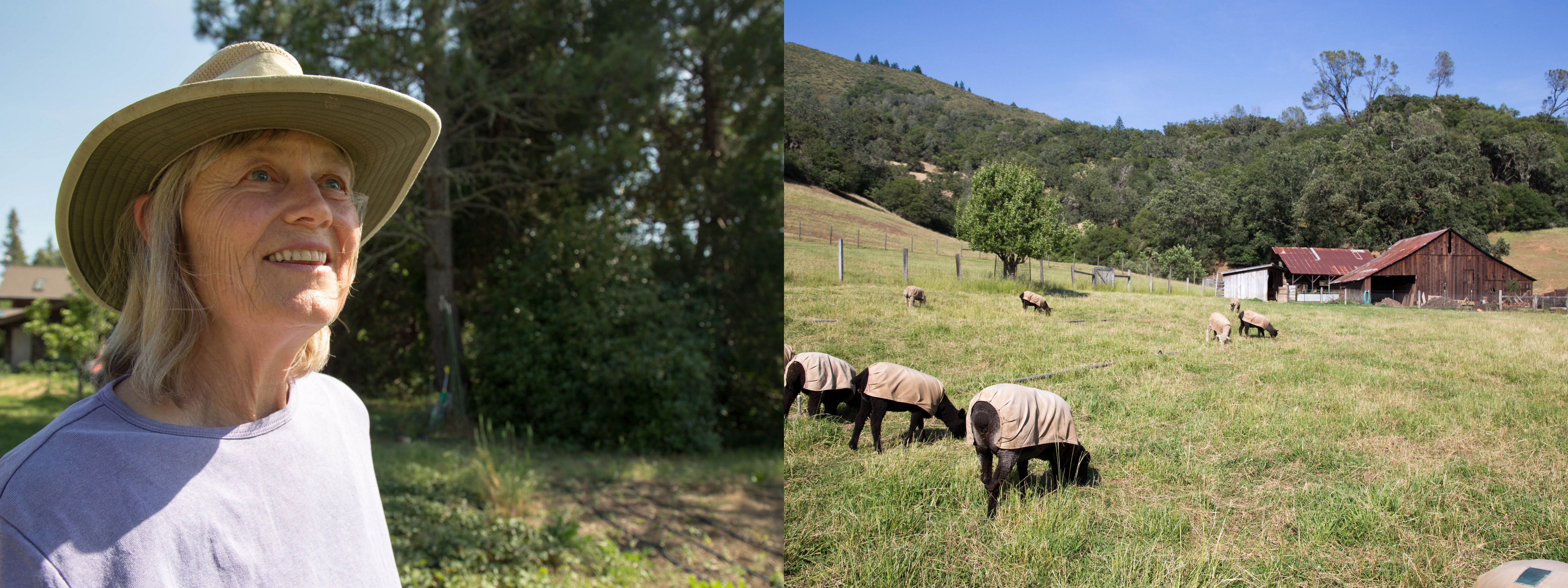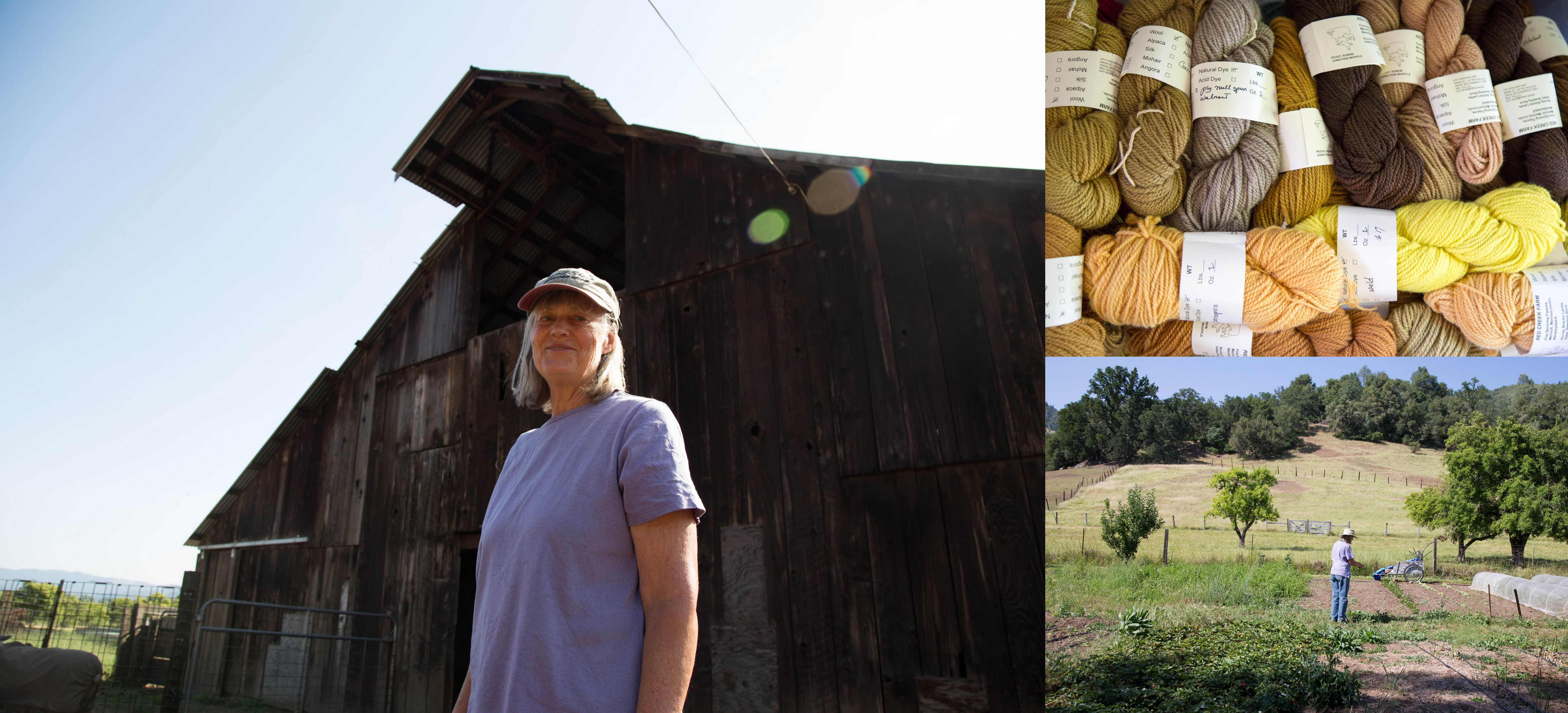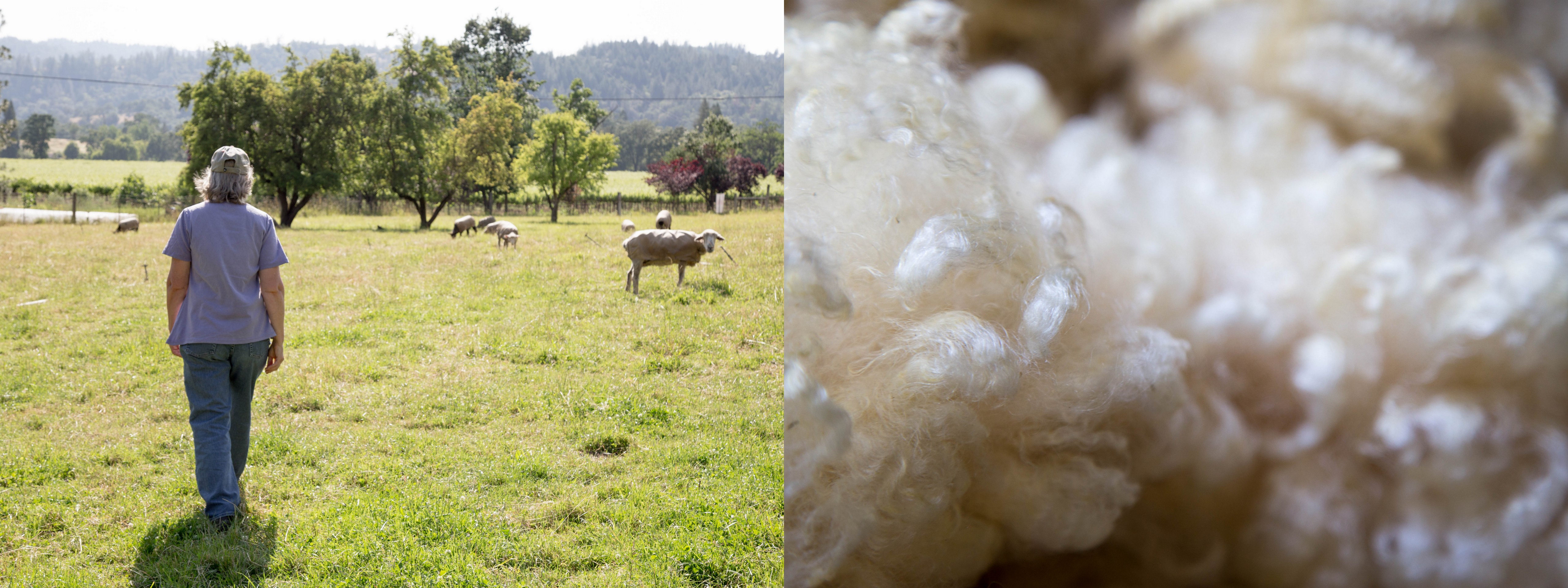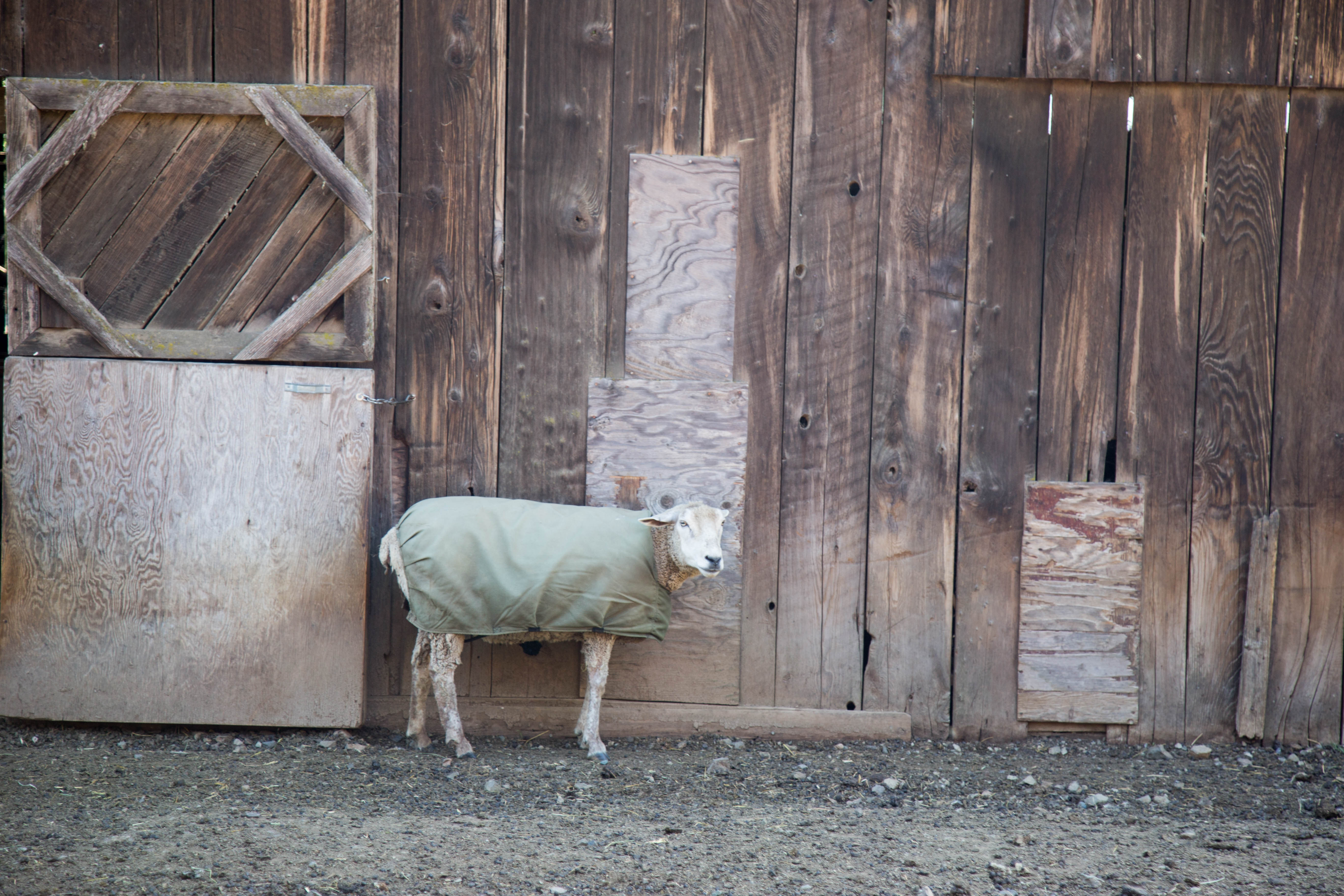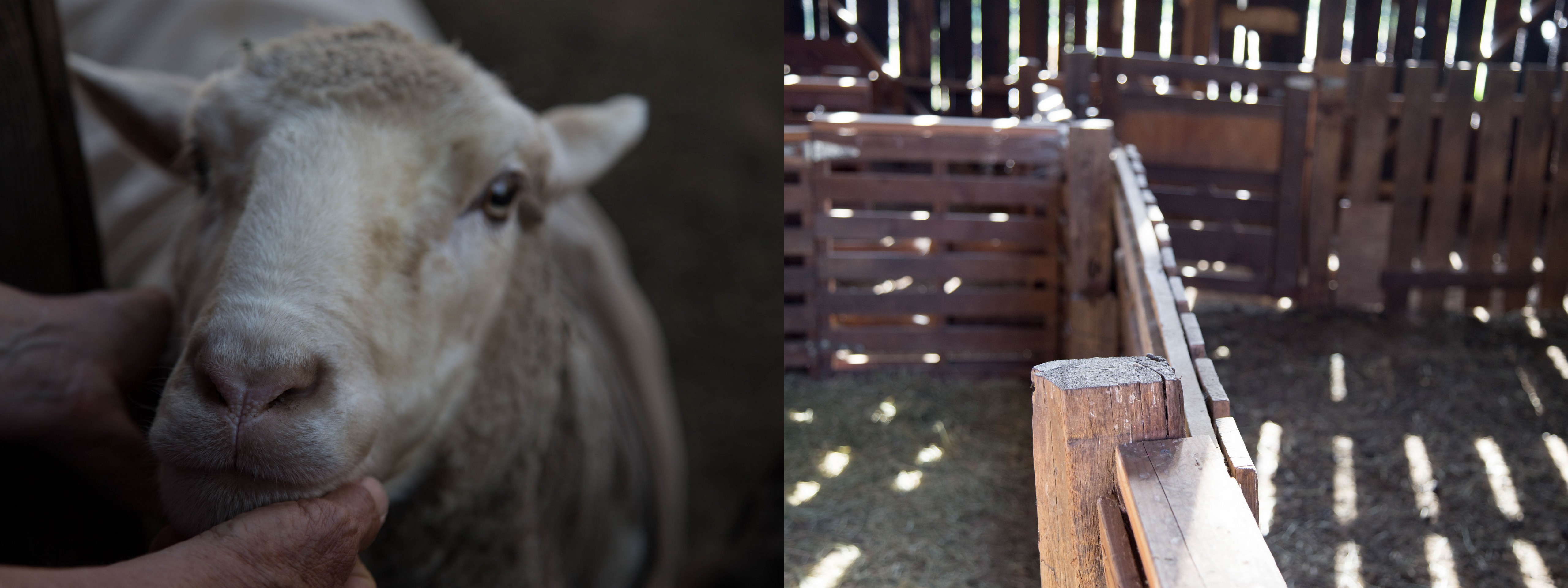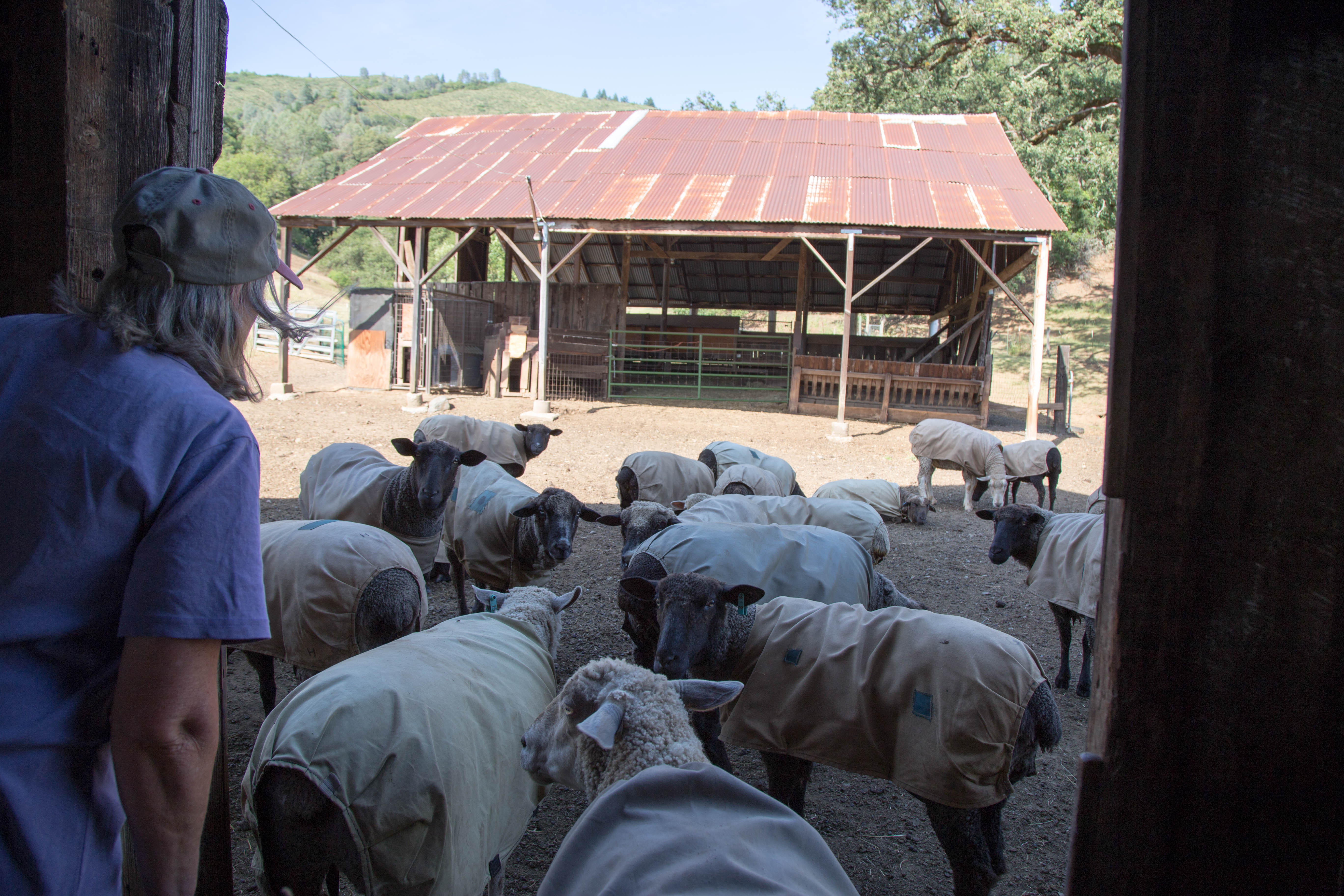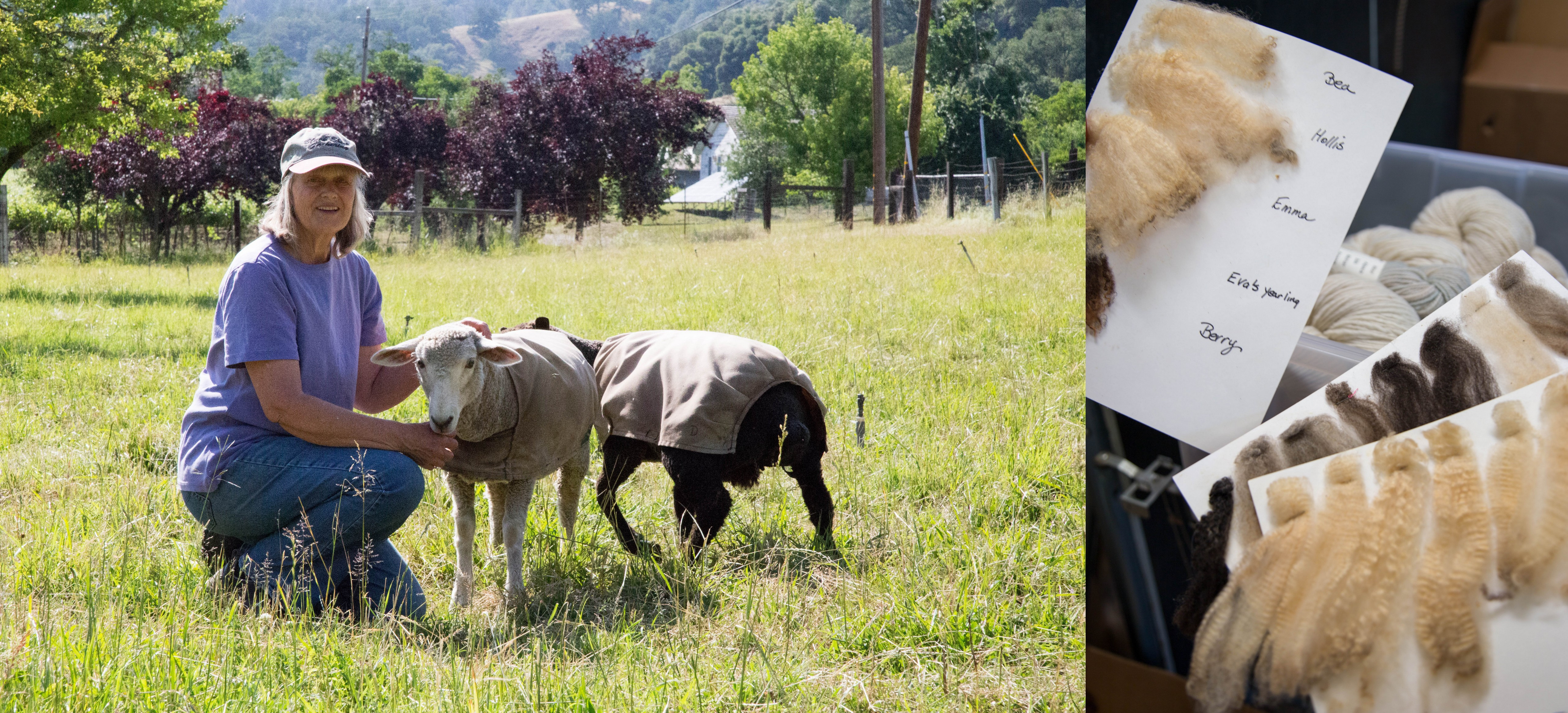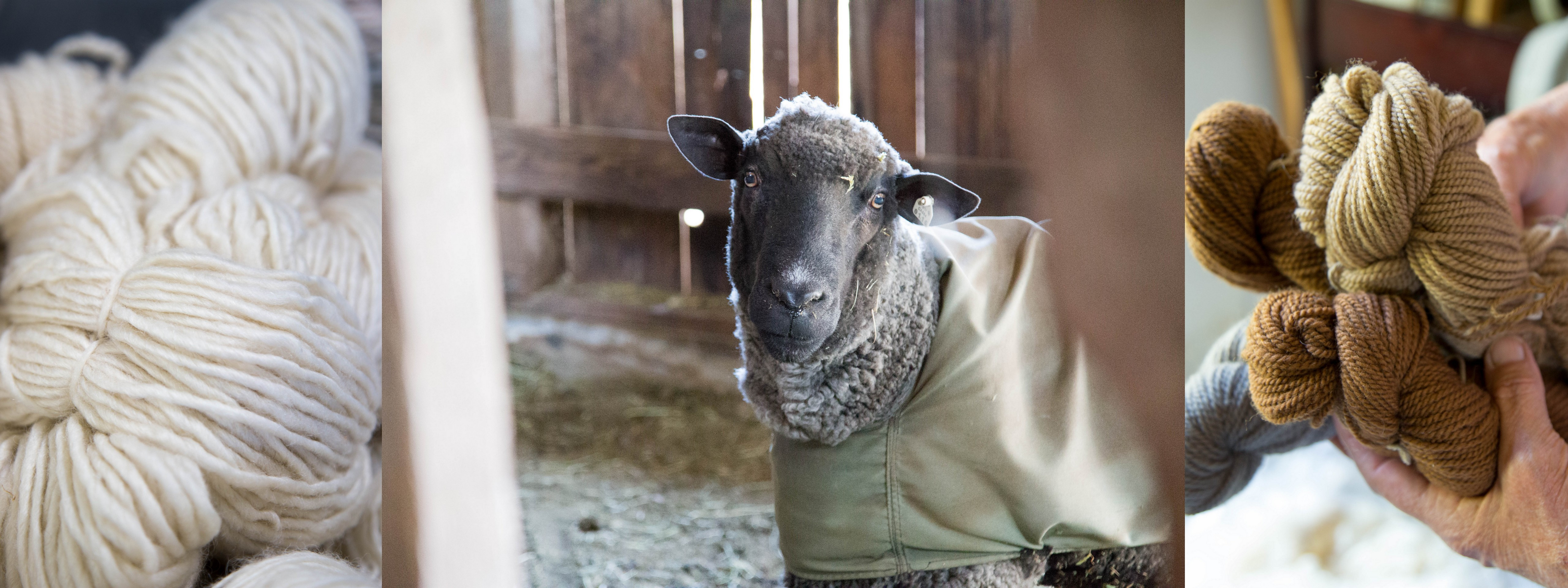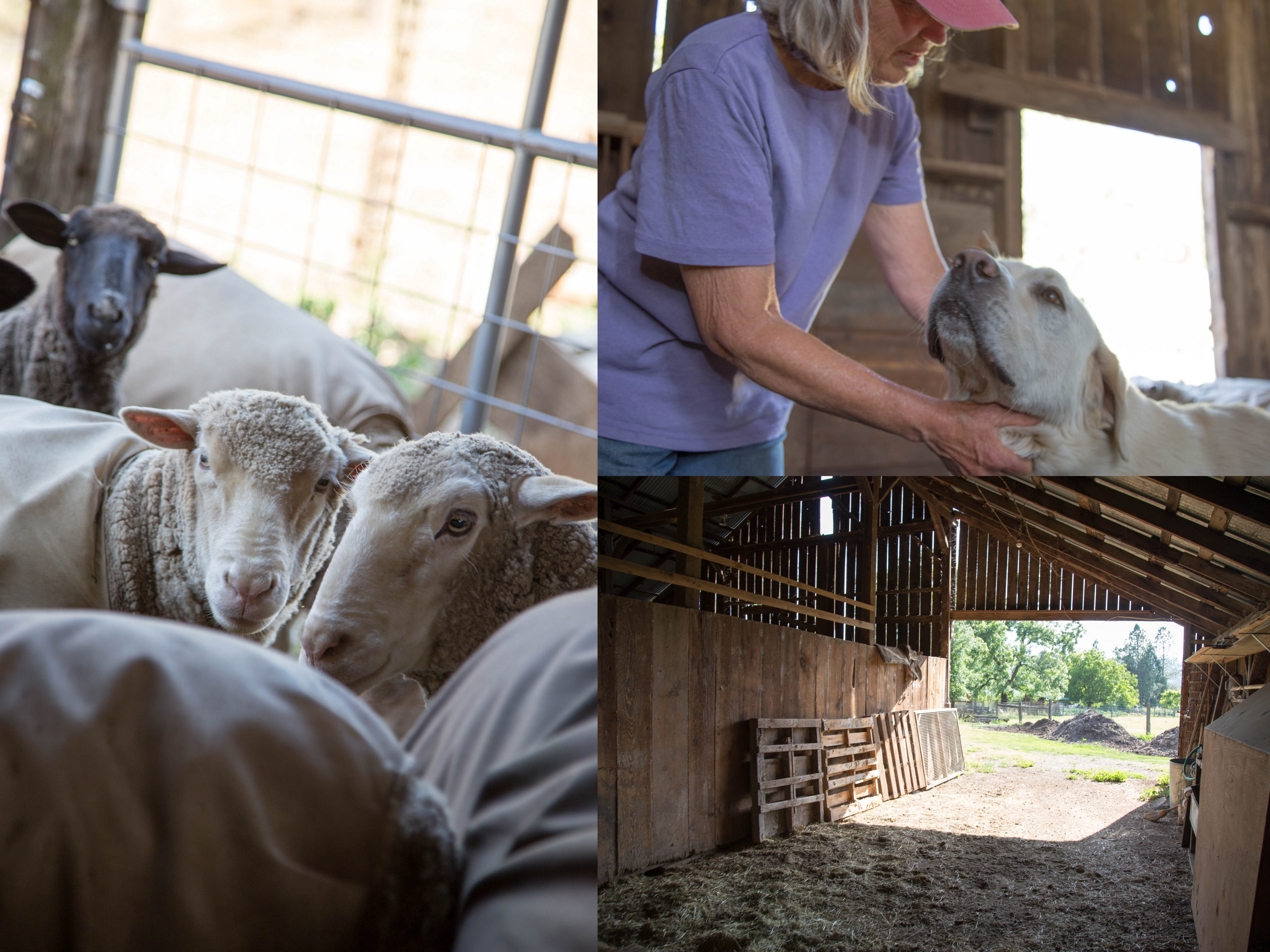Written and photographed by Brittany Cole Bush
During especially heavy rains, a small creek running through Peggy Agnew and Jonathan Whipple’s parcel of irrigated valley in Mendocino County will turn a burnt red color from a loose patch of red dirt high up in the hills. It is from this phenomenon that the farm, nestled alongside rolling hills at the north end of Potter Valley, derives its name: Red Creek Farm.
It’s a natural name for the farm even though in recent years there hasn’t been much vigor in the creek to stain it this signifying color, as the drought affects so much, even simple things like this.
We were greeted by Morey, the dog, upon our arrival. He is chipper and sweet, an English Shepherd who doesn’t work much with the sheep, given his puppy-like excitement. Peggy’s sheep don’t need much herding assistance, after all. She seems to have such a sweet connection with them that they go and do pretty much whatever she pleases.
Peggy Agnew is a kind woman. She is gentle but also hearty with all of the ambitious projects that she and her husband, Jonathan Whipple, have on the farm. He was working on irrigation for the garden when I arrived. As it seems to always happen this way, he was just enough short on irrigation tape that it warranted a trip into town from their sweet place in Potter Valley. It’s clearly a busy place at Red Creek Farm in the spring and there are plans for the garden that require the watering from that very irrigation. Team spirit exuded with their many projects happening all about. Even the numerous cats came to be introduced to me while I spoke with Peggy in the back porch in the shade. Everyone wanted to be a part of what was going on.
Peggy and Jonathan moved to what they deemed Red Creek Farm in 1976 with the homesteaders spirit in heart. Coming from New England, the California climate and landscape couldn’t be much more different, but they have done a fantastic job at making themselves a home, digging in and setting claim, making a world of their own. They started out with your standard back-to-the-landers’ start-up farm: some dairy goats, a horse, and chickens. Peggy has enjoyed fiber arts for most of her life, picking up the various fiber crafts on and off. She added becoming an avid fiber producer with the introduction of her first angora goats to the farm. After some time, she pivoted to sheep. Sheep seemed to her to be less problematic and her passion for fiber and flock grew. Peggy shared that the more she delves into her work with the sheep and fiber, the more fascinating it is to her. During spinning demonstrations, she experiences folks lured by the art and often many want to try it for themselves. She enjoys sharing.
After expressing her enthusiasm about sharing the work that she is so dedicated to, she begins to describe some of her other passions. She has an abundant garden that provides food and a plethora of plants and flowers grown for the natural dyes that she colors her wool with: Japanese indigo, marigolds, weld, woad, black hollyhocks, mullein, madder, and dyers’ coreopsis. She explains that it doesn’t take such a large yield as one would think to provide the dye one would need to produce a good-sized project. The garden is clearly happy with pollinators, adequate water from a rain-giving season, as well as love and tending from Peggy and Jonathan.
Later on in the studio I was able to see some of the incredible colors that the natural dyes produce. It’s an art in itself to create consistency working with them. She explains how the different batches yield differences in richness, saturation, tone, and brightness. Peggy’s roving and yarns demonstrate this vibrancy in her many beautiful, naturally – dyed works. Her sheep also yield some natural colors that are impressively rich in color and luster.
Since beginning to work with sheep, she has built a unique taste for what breeds produce what kinds of fiber that she likes to work with, and says that it’s changed over time. Today her flock consists of a four way cross, selecting for the long luster qualities that she likes, mixed with the softness from the fine wool breeds, such as Merino.
She mentions that the long luster breeds may offer a bit coarser fiber, but individuals can express the desired softness. Peggy likes the length of the staple and the luster expressed in this breed class, but the Merino and Cormo provide that additional fineness that is also desirable. The breeds in her flock are the aforementioned fourway cross: Merino x Lincoln x Cormo x Wensleydale. Through time and experimentation, she has found what works for her, but says if she had to go with one breed she would choose the smaller – framed Cormo. By choosing rams selectively she is working to finesse the flock to produce what she desires. She might consider a Corriedale ram in the future. Building the flock had been a goal for some time, and now it feels that it’s at an adequate size. Learning what her land-base has to offer over the years, she feels that even reducing the flock size may be her next step. Learning to know what the land can provide is a true art, while keeping the integrity of animal condition and land vitality.
Her breeding program starts in August to have lambs in January and February. This year (2016) she has about 40 head: comprising breeding ewes, a few dry ewes, ten lambs, some wethers and one Wensleydale/Cormo ram. In recent years the majority of her lambs have been wether lambs, but this year she has had a higher ratio of ewe lambs, making her happy. Upon our visit to the pasture and barn the connection between the animals and Peggy becomes apparent. A few come to greet her while others keep on with their grazing, clad in their fleece-protecting jackets. The sun was just in the right place to make for a shiny moment where Peggy and her sheep all seemed to be in their true element collectively. Her bright blue eyes show pride for her sheep and what she and her husband have built together. She was humble all the while with her explanations of things and her process, always saying that she is still learning and experimenting to find what’s best.
The sheep either go up the hills in back of the home base barns, or out to the cross-fenced irrigated pastures, depending on the time of year. Two white guardian dogs, one a full Pyrenees and the other ¾ Pyrenees and ¼ Akbash, protect against the predation of coyotes who are occasionally spotted, and often heard, as the farm butts up against the wild. The sheep can be out on the property, the majority of which is rolling and steep hillside for up to six months, and less during drought years. During the winter months there is supplementation with grass and alfalfa hay. When lactating, the ewes are fed additional grain. This begins in about November and lessens as the spring grasses become more abundant.
Her flock management includes routine conventional treatments, but Peggy has interest in learning from a younger friend who practices more natural flock management techniques. She stays on top of hoof trimming and needs to watch their feet closely when they are on irrigated pasture.
Peggy estimates that she produces about 30 fleeces a year, with a general average of un-skirted fleeces weighing about 10 pounds and skirted 6-8 pounds. She has meticulous records of each sheep and the wool they produce with a staple of their fleece and name on card stock. She names each years’ lamb crop with a corresponding letter, a good old trick of the trade and great way to keep track of things if your flock size is smaller.
Peggy sells fleeces, roving, and yarn under the brand of her farm, Red Creek Farm. Selling direct to customers is what she prefers and does not wholesale her products to retailers. She sells predominantly to locals and folks at fairs and trade shows. She has plenty of product on hand, but also a lot of wool that needs processing. A common issue that continues to come up is the challenge in getting the wool processed to yarn consistently, conveniently, and regionally. She sends fiber out-of-state, but would love to have more resources for milling her wool regionally. It’s a practice she supports, to go and visit the mill where the wool is processed. The fleeces are so valuable to her, as the work is so intensive, and the animals respected and loved, that quality is an utmost necessity and standard. She has found solutions to getting her wool processed, but not without challenge. She has to sit on a lot of raw product until she has enough to send. She is looking forward to Matt Gilbert’s local wool mill opening up in Ukiah soon.
Continued camaraderie, education, and mentorship are themes that came up in discussion amidst our walk around the farm, and visiting her studio filled with impressive fiber works. There is an active community called The Oak Granary down the way, and Peggy says that there are a lot of active young people involved, which makes her feel hopeful. Networking and connection – building potentials are invaluable, and The Oak Granary is a hub for such things. She feels that Fibershed also is a great network that pulls all kinds of people together. Selling through an online community is a useful and convenient platform, but to come together, celebrate, and meet in person to share directly about the work that we are all so passionate about is truly fulfilling. Peggy believes that there are clear opportunities to share skills and to offer mentorship from the more seasoned members to the greenhorns of the community. She points out that younger folks can help with technology: email, websites, social media and new kinds of communication for education, awareness and product sales.
We ended our tour of her farm and operation at the barn, greeted by the two sweet, white guard dogs and the flock. They didn’t seem to mind our visit one bit. Lounging in the shade, they huddled closely together, a sign of good flocking instinct. With each new bit of unique information, and the ways that Peggy does things in her practice of raising sheep and working with fiber, I fall deeper in love with our fibershed, appreciating the authentic individuals that comprise the cast of characters working so passionately within it. Peggy Agnew, her husband, their animals and garden, together make up the richness of abundant qualities that Red Creek Farm provides, a rewarding lifestyle of love, sheep, and fiber.
Brittany Cole Bush is a self-deemed, Modern-Day Shepherdess who works in land stewardship and contract grazing with sheep and goats. As a younger grazier, she is passionate about being a part of the next generation of agrarians workings towards viable and regenerative agricultural systems and businesses. Follow her work online: www.brittanycolebush.com

